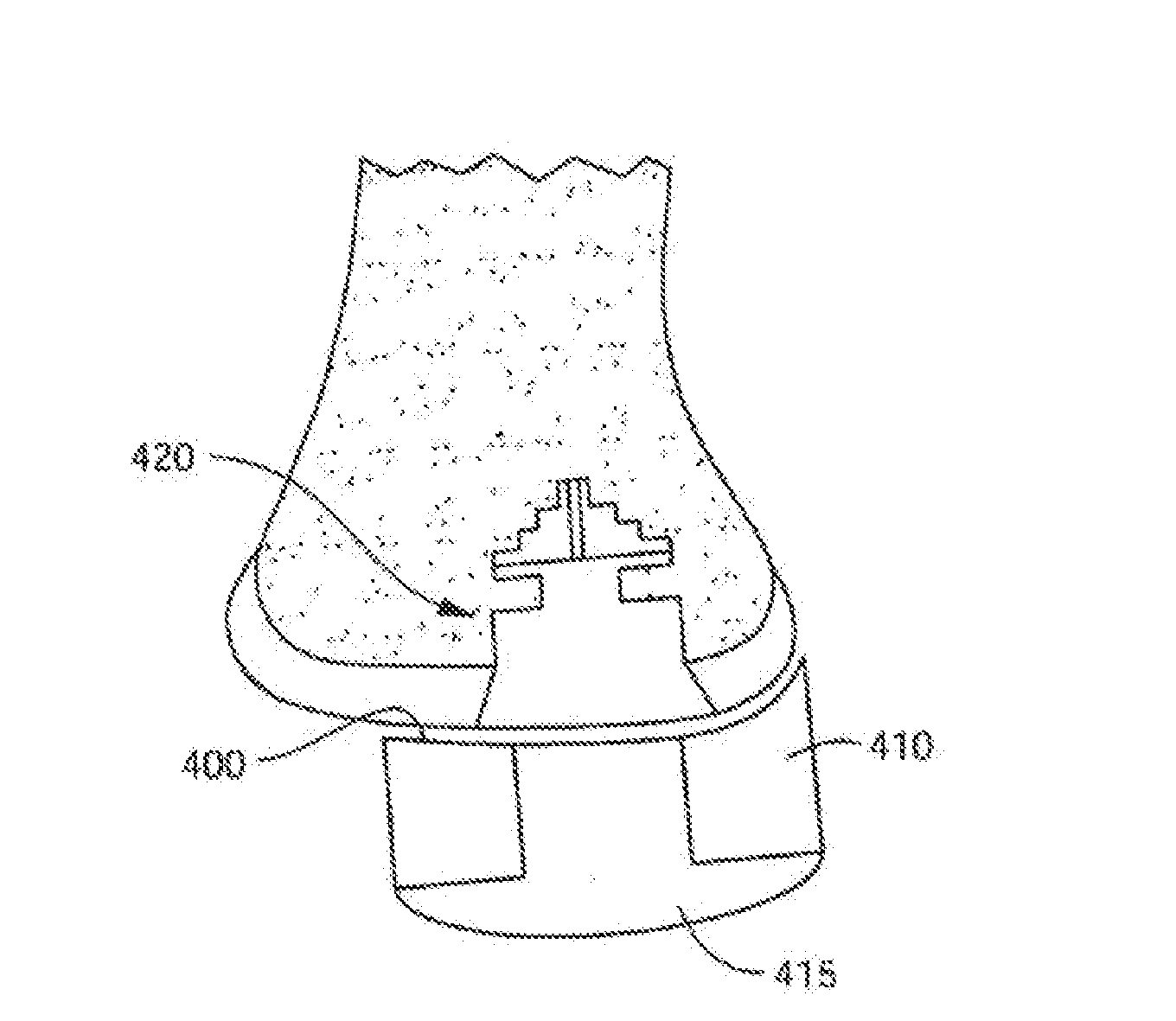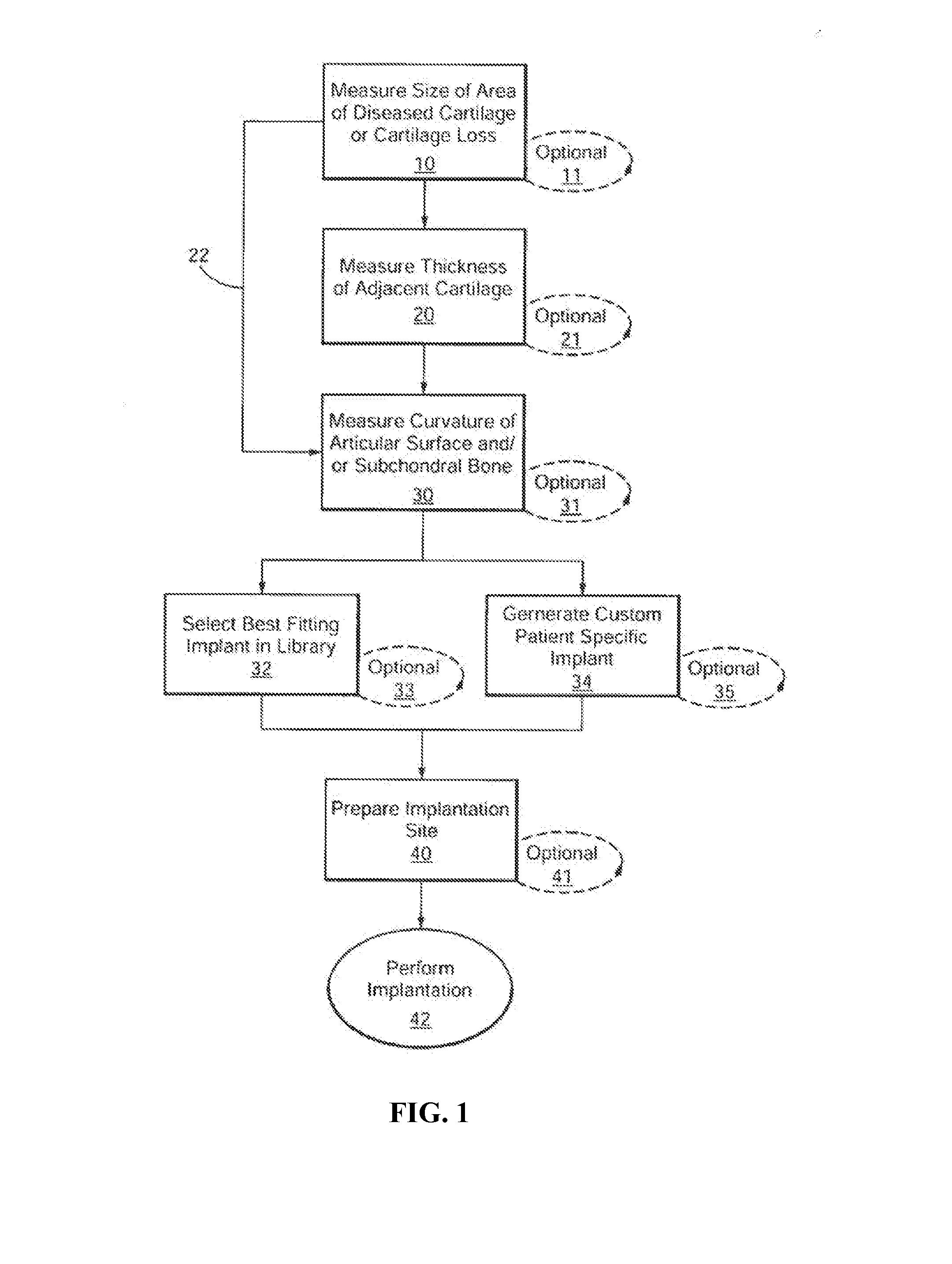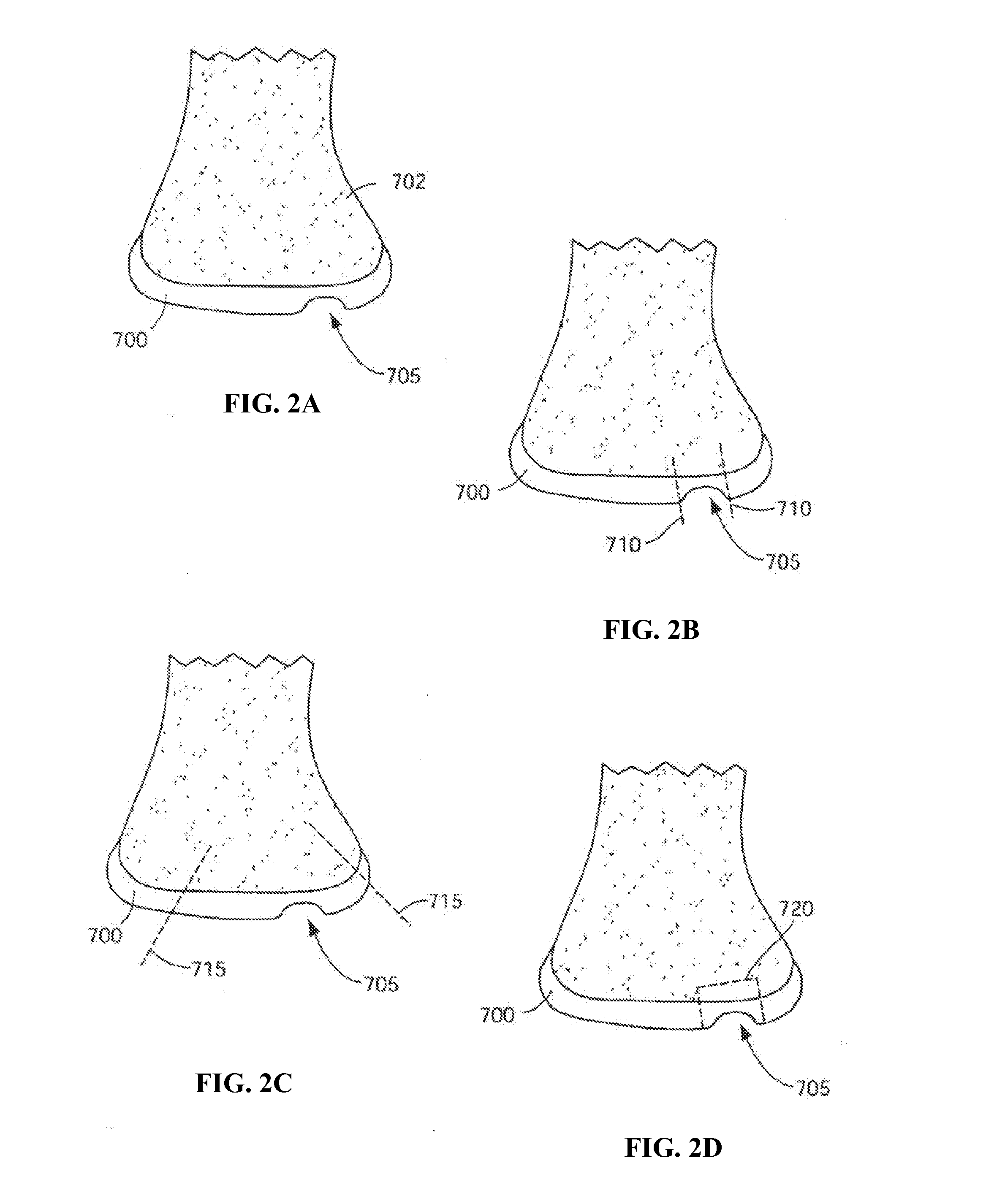Patient Selectable Joint Arthroplasty Devices and Surgical Tools Incorporating Anatomical Relief
a patient-selectable, joint technology, applied in the field of joint replacement and articular resurfacing, can solve the problems of limited repair ability of cartilage, serious physical deformity and debilitation, and uncertain clinical outcomes of biologic replacement materials such as allograft and autograft systems and tissue scaffolds, so as to reduce the amount of bone removed, improve the fit, and improve the effect of natural movement of the join
- Summary
- Abstract
- Description
- Claims
- Application Information
AI Technical Summary
Benefits of technology
Problems solved by technology
Method used
Image
Examples
example 1
Design and Construction of a Three-Dimensional Articular Repair System
[0622]Areas of cartilage are imaged as described herein to detect areas of cartilage loss and / or diseased cartilage. The margins and shape of the cartilage and subchondral bone adjacent to the diseased areas are determined. The thickness of the cartilage is determined. The size of the articular repair system is determined based on the above measurements. In particular, the repair system is either selected (based on best fit) from a catalogue of existing, pre-made implants with a range of different sizes and curvatures or custom-designed using CAD / CAM technology. The library of existing shapes is typically on the order of about 30 sizes.
[0623]The implant is a chromium cobalt implant. The articular surface is polished and the external dimensions slightly greater than the area of diseased cartilage. The shape is adapted to achieve perfect or near perfect joint congruity utilizing shape information of surrounding cart...
example 2
Minimally Invasive, Arthroscopically Assisted Surgical Technique
[0624]The articular repair systems are inserted using arthroscopic assistance. The device does not require the 15 to 30 cm incision utilized in unicompartmental and total knee arthroplasties. The procedure is performed under regional anesthesia, typically epidural anesthesia. The surgeon can apply a tourniquet on the upper thigh of the patient to restrict the blood flow to the knee during the procedure. The leg is prepped and draped in sterile technique. A stylette is used to create two small 2 mm ports at the anteromedial and the anterolateral aspect of the joint using classical arthroscopic technique. The arthroscope is inserted via the lateral port. The arthroscopic instruments are inserted via the medial port. The cartilage defect is visualized using the arthroscope. A cartilage defect locator device is placed inside the diseased cartilage. The probe has a U-shape, with the first arm touching the center of the area ...
example 3
Design and Construction of a Implant and / or Surgical Tool Incorporating a Negative Anatomical Relief
[0629]Anatomical relief features can be used to accommodate or otherwise address osteophytes, subchondral voids, residual normal or diseased cartilage or combinations thereof and other patient-specific defects or abnormalities. In the case of osteophytes, the osteophyte can be integrated into the shape of the bone or joint facing surface of the implant component or guide tool. FIGS. 52A and 52B are exemplary drawings of an end of a femur 1010 having an osteophyte 1020. In the selection and / or design of an implant component for a particular patient, an image or model of the patient's bone that includes the osteophyte or other surface feature can be utilized as a model for creating, designing and / or selecting an implant and / or surgical tool having one or more conforming surfaces. If desired, the portion of the image having the surface feature may be modified, transformed, cross-referenc...
PUM
| Property | Measurement | Unit |
|---|---|---|
| Structure | aaaaa | aaaaa |
| Area | aaaaa | aaaaa |
| Distance | aaaaa | aaaaa |
Abstract
Description
Claims
Application Information
 Login to View More
Login to View More - R&D
- Intellectual Property
- Life Sciences
- Materials
- Tech Scout
- Unparalleled Data Quality
- Higher Quality Content
- 60% Fewer Hallucinations
Browse by: Latest US Patents, China's latest patents, Technical Efficacy Thesaurus, Application Domain, Technology Topic, Popular Technical Reports.
© 2025 PatSnap. All rights reserved.Legal|Privacy policy|Modern Slavery Act Transparency Statement|Sitemap|About US| Contact US: help@patsnap.com



